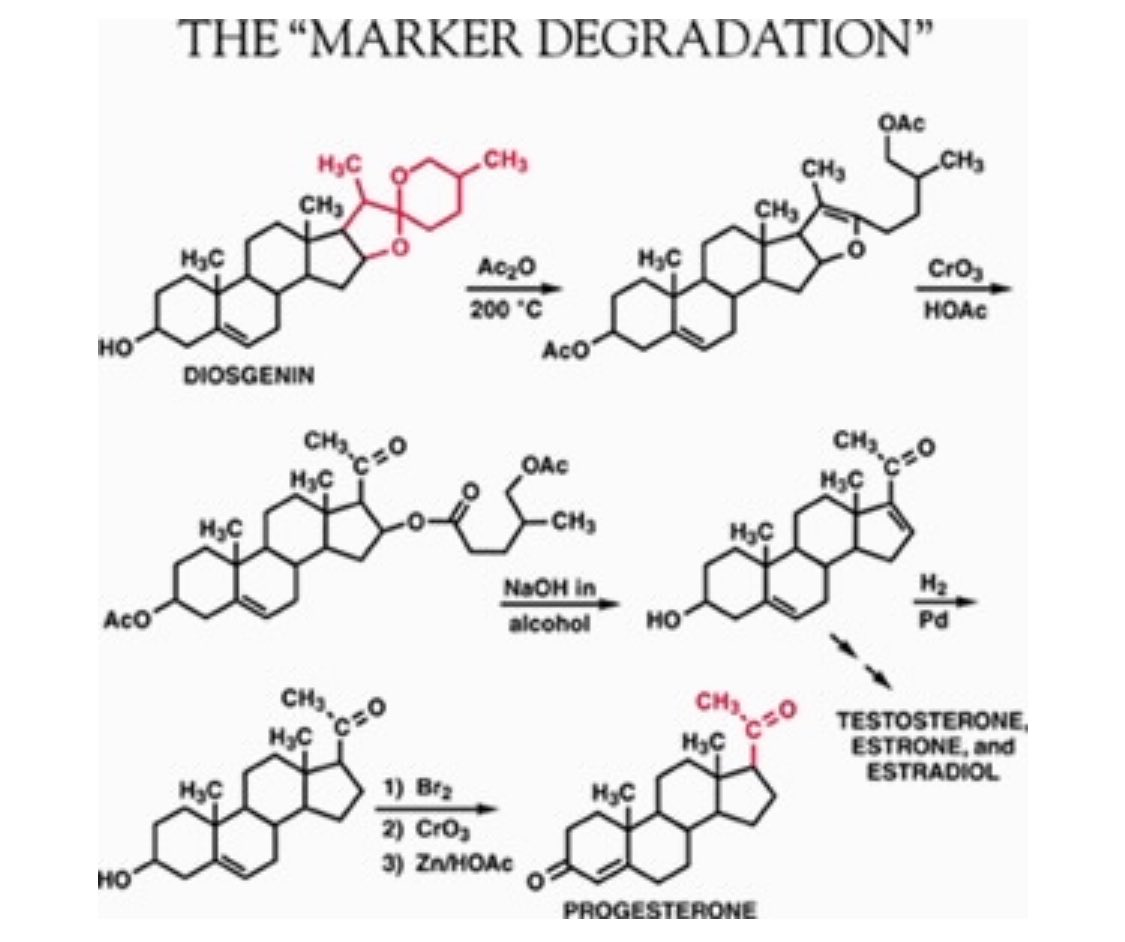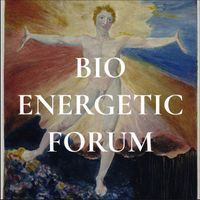Using Marker Degradation to Synthesize Progesterone from Mexican Yams
-
I have a goal of being able to make most of the important bioenergetic substances from scratch. There's a process to make "thyroid" (-like substance) by boiling milk with iodine for a few hours. Something more impressive would be to fully synthesize progesterone from diosgenin, which is found in Mexican Yams.
There's a quote from Ray (can't find it now) that the process of synthesizing progesterone is well known and can be done on a local level. I haven't found any reliable source that actually explains how to do that in detail.
Russell Marker first accomplished this in 1942-1945. He was frustrated by the slow pace of progress. Remarkable and interesting story:
When Marker went to Mexico City in January 1942, the U.S. Embassy advised him to leave immediately because of widespread anti-American sentiment fueled by World War II. Instead, Marker took a bus to Orizaba, changed to the local bus to Cordoba, and, on the way, recognized the stream described in the botany text. By the stream, he found a country store owned by Alberto Moreno, a native Mexican who did not speak English. Despite the language barrier, Moreno was enlisted to find some cabeza de negro. Although Marker had no plant-collecting permit, two large roots in bags soon were loaded on top of the bus to Orizaba. When Marker got there, the bags were gone, but he recovered the larger 50-pound root by bribing a local policeman.
Back at Penn State, Marker isolated diosgenin in satisfactory yield from part of the smuggled tuber. Because his research had been funded by Parke-Davis, Marker took the rest of his root to its laboratories in Detroit. There, he repeated his process in an attempt to persuade the company to commercialize it. However, Parke-Davis's president refused, because he believed chemical work could not be done in Mexico. Marker's efforts to interest other pharmaceutical houses also failed, and, by the fall of 1942, he was convinced the only path to success "was for me to do it myself."
Marker returned to Veracruz and arranged with Moreno to collect and dry about 10 tons of cabeza de negro. In Mexico City, he found a man with a small-scale extractor, who extracted the roots with alcohol and evaporated the extract to a syrup. Next, in return for a third of the product, Marker arranged with a New York friend, Norman Applezweig, to use his laboratory to convert the syrup to progesterone. Marker finished with three kilos valued at $80 per gram, then the largest lot of progesterone ever produced.
The Marker Degradation diagram looks like this:

And here are links to his patents (1, 2).
At a high level, these are the steps involved in the Marker Degradation, from what I can tell (I'm no trained chemist):
-
Starting with Diosgenin: Diosgenin is a steroidal sapogenin and is the starting material in this synthetic pathway.
-
Acetylation: Diosgenin undergoes an acetylation reaction where the hydroxyl groups are protected by acetyl groups (AcO) using acetic anhydride (Ac2O) at high temperature (200°C). This step is important to prevent any unwanted reactions at these positions in the subsequent steps.
-
Ring Opening: The acetylated diosgenin undergoes a chemical reaction that opens the F ring of the steroid (highlighted in red in the diagram). This is done by heating with sodium hydroxide (NaOH) in alcohol.
-
Oxidation and Rearrangement: The open-ring compound is then treated with chromium trioxide (CrO3) in acetic acid (HOAc), which oxidizes the molecule and leads to a rearrangement of the structure to form a ketone at a specific position.
-
Conversion to Progesterone: The ketone undergoes further reactions, including bromination (Br2), another oxidation with chromium trioxide (CrO3), and finally treatment with zinc (Zn) in acetic acid (HOAc) to yield progesterone.
-
Synthesis of Other Steroid Hormones: The progesterone can then be converted into testosterone, estrone, and estradiol through additional chemical reactions. The diagram indicates a reduction step with hydrogen (H2) and a palladium catalyst (Pd), which is a common way to reduce ketones to alcohols, leading to the formation of these other steroids.
From here, the question would be how to modify this recipe to include ingredients and equipment that are widely available. Thanks for reading my post and please contribute if you have any expertise or opinions on the matter.
-
-
Thanks for posting. This is a difficult procedure to do at home if you need 10 tons to get 3 kilos.
-
@brad Great thread and idea. Wanted to post one like that (discussion about peaty substances that could realistically be produced in a home lab setting)
-
@Norwegian-Mugabe Agreed. The yield should be higher if you're just using diosgenin though.
-
 B brad moved this topic from Bioenergetics Discussion on
B brad moved this topic from Bioenergetics Discussion on
-
Thread titles you'll only see on ray peat forums